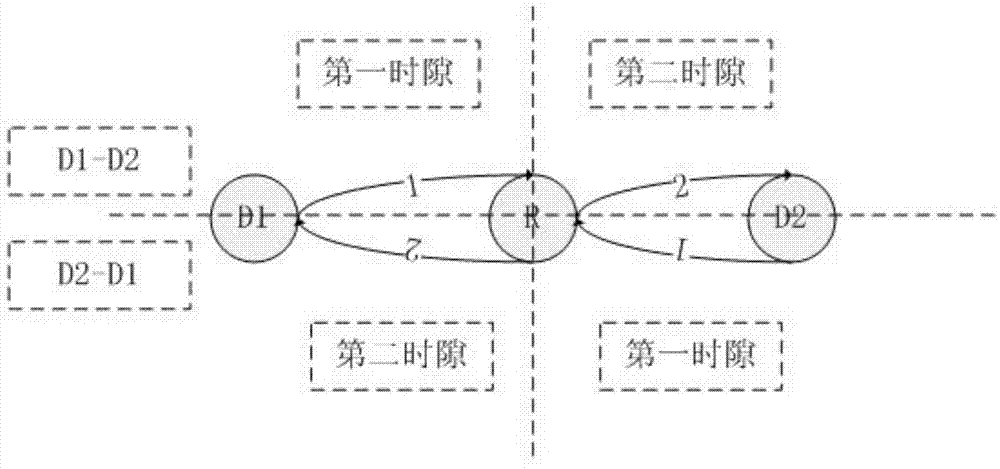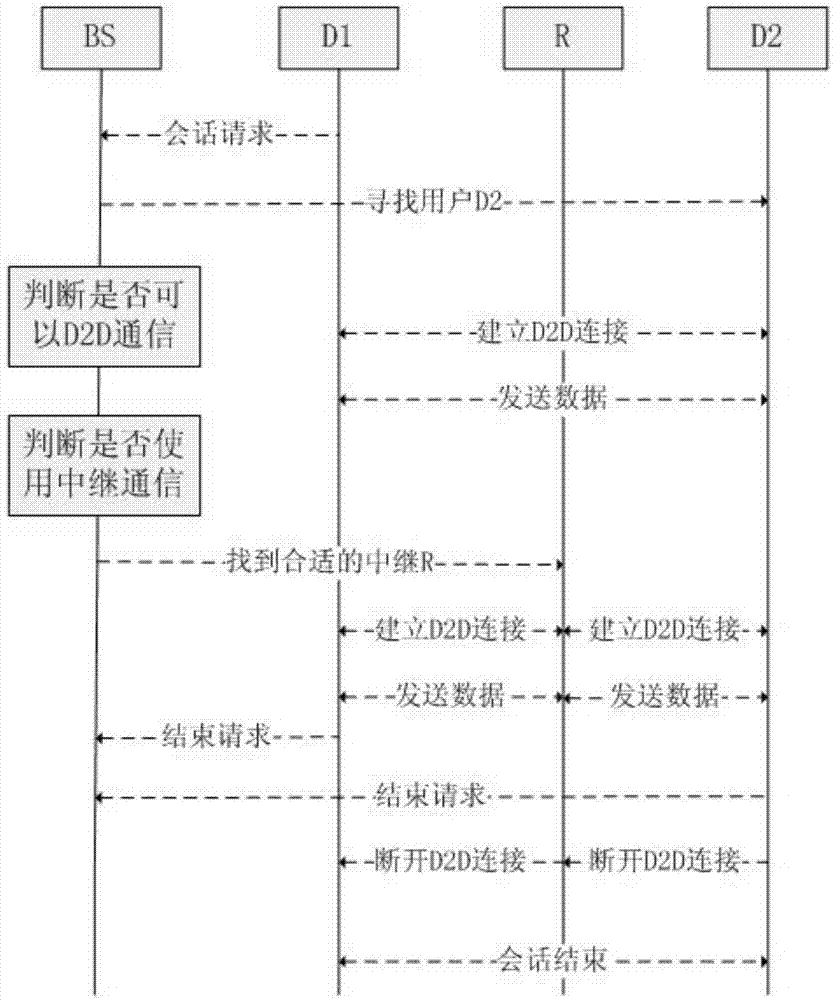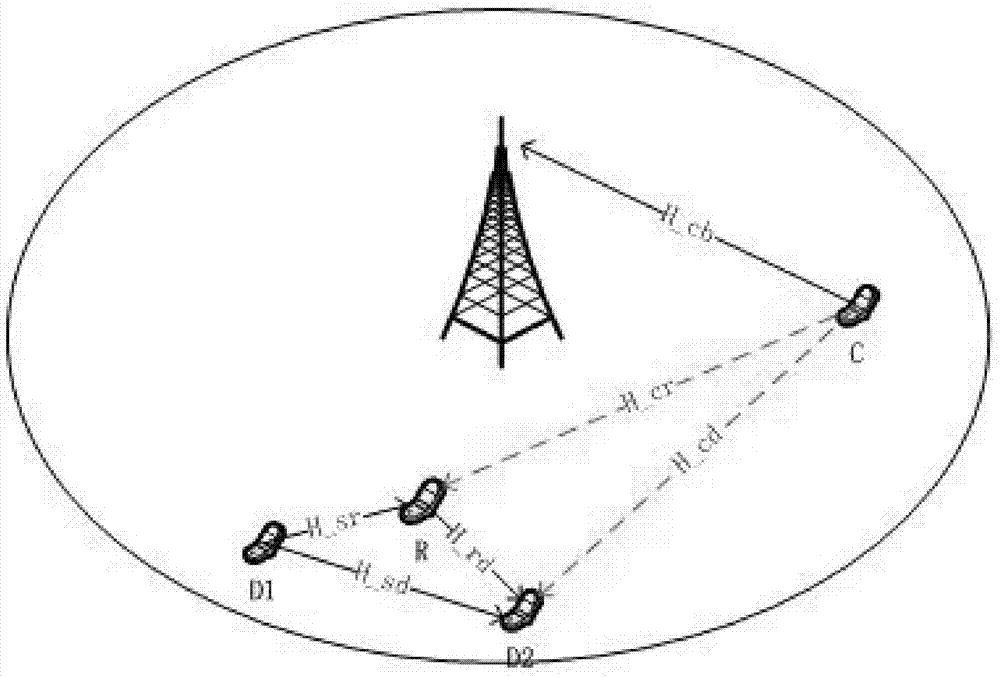Terminal D2D (device-to-device) communication method based on multiple-input multiple-output cooperation relay
A technology of terminal direct communication and cooperative relay, which is applied in the field of terminal direct communication based on multi-input and multi-output cooperative relay, and can solve the problem that the D2D communication rate or interruption rate cannot meet the requirements, and the channel link quality cannot meet the requirements, etc. problems, to achieve the effect of reducing the probability of interruption, improving the utilization rate of spectrum resources, and increasing the rate
- Summary
- Abstract
- Description
- Claims
- Application Information
AI Technical Summary
Problems solved by technology
Method used
Image
Examples
Embodiment 1
[0025] Such as image 3 As shown, the D2D communication system of the MIMO cooperative relay of the present invention is in a cellular cell, and the system includes a base station, a cellular user, a pair of users to perform D2D mode communication and a relay, wherein the D2D user and the cellular The number of antennas of the user is M, the number of antennas of the relay is N, and the number of antennas of the base station is I. image 3 The interference situation when D2D users and relays multiplex uplink resources of cellular users is described in . image 3 D1 and D2 are the sending end and receiving end of the D2D user respectively, R represents the relay node, and C represents the cellular user. D1 represents the source node S among the three relay nodes, and D2 represents the destination node D among the three relay nodes. Assuming that the cellular user is always working, the cellular user will interfere with the relay node and D2. The relay works in time-division h...
Embodiment 2
[0102] like figure 1 As shown, in the broadband cellular mobile communication system (IMT-Advanced) of the present invention, a pair of cellular users want to perform terminal direct communication, but because the distance between them exceeds the effective distance of D2D communication, or the channel link quality between them If the requirements are not met, because there are a large number of idle UE users in the cell, idle mobile terminals are used as relays to assist a pair of cellular users in D2D communication. The sending end of a pair of terminal direct-to-cellular users is marked as D1, the receiving end is marked as D2, and the relay is marked as R. When D1 and R communicate, D1 multiplexes the frequency resources of cellular users and base stations in the cell. At this time, D1 and R form a pair of D2D communication; when R and D2 communicate, R also multiplexes cellular users and base stations. The frequency resource for base station communication (the same as th...
PUM
 Login to View More
Login to View More Abstract
Description
Claims
Application Information
 Login to View More
Login to View More - R&D
- Intellectual Property
- Life Sciences
- Materials
- Tech Scout
- Unparalleled Data Quality
- Higher Quality Content
- 60% Fewer Hallucinations
Browse by: Latest US Patents, China's latest patents, Technical Efficacy Thesaurus, Application Domain, Technology Topic, Popular Technical Reports.
© 2025 PatSnap. All rights reserved.Legal|Privacy policy|Modern Slavery Act Transparency Statement|Sitemap|About US| Contact US: help@patsnap.com



